Anna Knox – 3 November, 2018
The show is one huge palindrome, with Pound knows how many instances of reflection. Almost every image has a second: shadow, mirror, double. Every collection has a reverse or one with an opposing organisational principle. The items in the ‘point-of-everything' collections at either end of the room carefully answer each other. Even the shadows of the busts made by Margaret Butler mirror the shadows of the busts of Margaret Butler—one in bronze and one plaster, back-to-back.
Wellington
Patrick Pound
On Reflection
11 August - 4 November 2018
Half-way around Patrick Pound’s On Reflection at Te Whare Toi I felt an enormous sense of relief. I had been working my around the left-hand side of the gallery space clockwise and categorically, processing the photographs and items one by one, trying to take everything in. As we returned to the centre of the exhibition my two year old pointed to the floor and shouted: ‘Look! Shadows! Shadows!’ She meant our own, cast in a clear double next to those of the Margaret Butler busts. The simplicity and temporality of our outlines was a balm after the meticulous arrangement and intricacies of the collections, the materiality of so many photos and objects.
There are many ways an audience will experience this show. The expansiveness invites it. As in an internet search—an obvious comparison for the work, including a ‘dark web’ across the foyer—there is too much here to take in at once, or possibly ever. If you key into this aspect, as I did initially, the effect is overwhelming. In my pedantic, compendium approach, I became addicted to the search, and exhausted in the process.
Yet every item in the show can also stand alone as an artwork and many have, and by collating and organising them Pound creates something new and whole. If you peruse randomly (as I did on a subsequent visit), and jump from item to item making small connections here and there, following the prompts of just one photo or artwork, or a handful, the effect is more fun and satisfying. And if you step back from the infinite details and observe your own shadow as yet another double in a collection of thousands, the complexity fades.
The show is one huge palindrome, with Pound knows how many instances of reflection. Almost every image has a second: shadow, mirror, double. Every collection has a reverse or one with an opposing organisational principle. The items in the ‘Point of Everything’ collections at either end of the room carefully answer each other. Even the shadows of the busts made by Margaret Butler mirror the shadows of the busts of Margaret Butler—one in bronze and one plaster, back-to-back. The work took several years to amass and organise, and the mental effort involved is immense. One has to admire Pound’s God-aspiring mind, and his systems, for achieving it and for taming all that material. Why this material in particular is another question.
This religiosity might be intentional. Entering the exhibition feels very much like entering a church. There is a bronze figure of a photographer, like an icon, encased in glass, and an old invitation folded in way that references a cathedral’s double doors. Looking up, crosses cover the central wall, formed from photos arranged like pieces of stained glass. The lighting is dim, the atmosphere reverent. Religion’s insistence on organising and narrating the world in a way that makes sense of chaos is also present, as is the inherent claustrophobia of that insistence.
The second half of the show seemed less intense, and extremely assuaging, as if the right-hand side repaired whatever the left-hand side had rift open. Everything on the left is repeated on the right, but with variations. The wind blows the other way, the cars drive in the other direction, the hands point less. A collection shows numbers one through twenty-six instead of the alphabet. There are women on the phone at one end and men at the other, and in the central panel on the right the wall of back photos is back-to-back with the backs on the left. To every question asked on the left, to every point of apprehension, there seems to be answer on the right. By experiencing the whole show, clock-wise, the fragmented symmetry relaxes into a whole.
But it was the inconsistencies, when I could find them, that gave me the most satisfaction, and broke up the overwhelm. A staff member on the floor pointed out a tiny locket portrait in the centre of the right-hand wall of backs. Whether a man’s head, or a woman’s, you can’t tell. All you can see is a lot of sepia hair. Why did someone have a minuscule picture of the back of someone’s head? Was it such a secret that they couldn’t show the face? Or was the other half lost? Or in another collection? Perhaps it was in Ricochet across the foyer?
The tiny portrait was framed and at first I thought it was the only one outside of the Te Papa works which was. I felt I’d found an escapee, or a clue. But there are four others. The exhibition’s feature photo and another mirroring photo are framed alone on a left-hand wall. And on the opposing right-hand wall are two framed photos featuring smoke. So it was all just—smoke and mirrors. (The repeated play on language in the show is worth a review of its own).
I did find an escapee in the end. A pair of images that convincingly shook off the claustro-phobia of being framed in two-fold. Their off-set, and slight distortion of insistent symmetry, has stayed with me. On the wall adjacent to the smoke photos, Rita Angus’s portrait of Helen Hitchings from the Te Papa collection contains a blurred version of Louise Henderson’s Still Life with Arum Lilies, the original of which sits next to the portrait. The second picture is not quite a mirror, or a double, or even a reference, to the first. Disrupting the rules, breaking with the religiosity—much like Pound does in his own collecting and exhibiting—it is just a part of the work.
Anna Knox

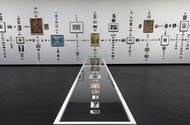
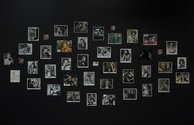
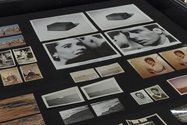
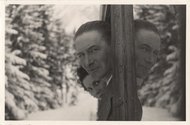
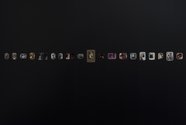
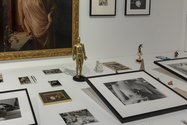

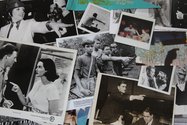
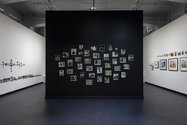
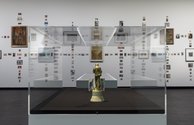
 Advertising in this column
Advertising in this column Two Rooms presents a program of residencies and projects
Two Rooms presents a program of residencies and projects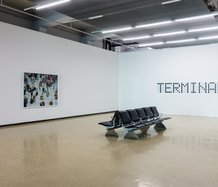
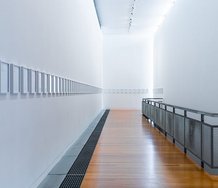
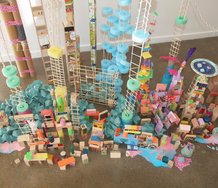
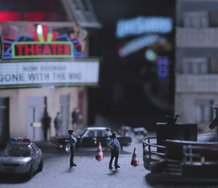
This Discussion has 0 comments.
Comment
Participate
Register to Participate.
Sign in
Sign in to an existing account.